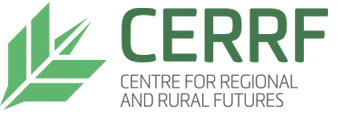Project aim
To maximise the economic value and ensure high value use of our limited water resources in regional and rural communities.
Project examples
Improving water and nutrient management to enable double cropping in the rice lowlands of Cambodia and Laos
This project assists farmers in Cambodia and Laos to maximise productivity in their rice farming systems through efficient use of water and nutrients.
Benchmarking water use efficiency and crop productivity in the Australian cotton industry
This project benchmarks water used in cotton crops on a production unit basis, with a view to maximising water use efficiency and crop yield.
Griffith Irrigation
The Irrigation laboratory has a long-established national and international reputation in irrigation and soils research. The research is focused on improving the productivity, profitability and sustainability of irrigated agriculture, locally, nationally and across the globe. This includes:
- Increased irrigation water use productivity through improved irrigation systems and irrigation management tools
- Improved drainage water management through quantity and quality control measures
- Improved soils through innovative management of organic matter including animal manures
- Assessment of green house gases from irrigated cropping.
- New and novel sensing technologies for water and nitrogen management including ground, airborne (drone) and satellite systems
The group currently have a range of projects looking at new technologies in irrigation systems to improve irrigation water productivity. These projects are largely focused on the use of smart sensing, analytics and automation within irrigation environments from farm to catchment scales. Additionally, work on the use on the sustainable use of animal wastes (manures) is a core part of current research projects due to this increasing waste source from intensive animal production and increasing costs of traditional fertiliser products.
Griffith Irrigation Research Group Case Studies
The Irrigation laboratory recently completed a project that developed an irrigation water monitoring tool that uses freely available satellite data to help irrigators across the globe better manage water. The tool known as IrriSAT is available freely online and recently won the 2018 International Commission on Irrigation and Drainage (ICID) Watsav technology award for outstanding technology contribution to water conservation or water saving in agriculture across the world.

